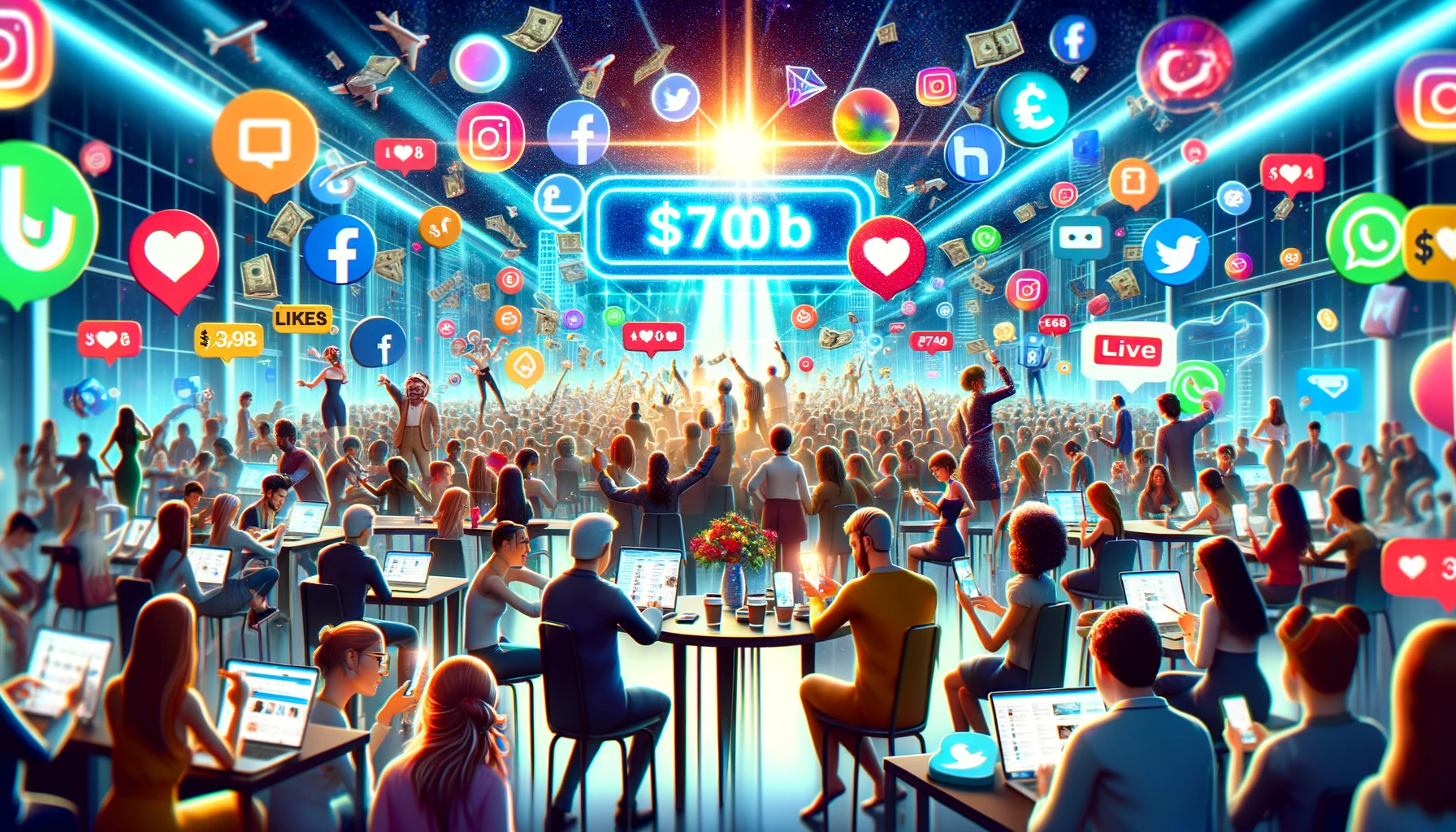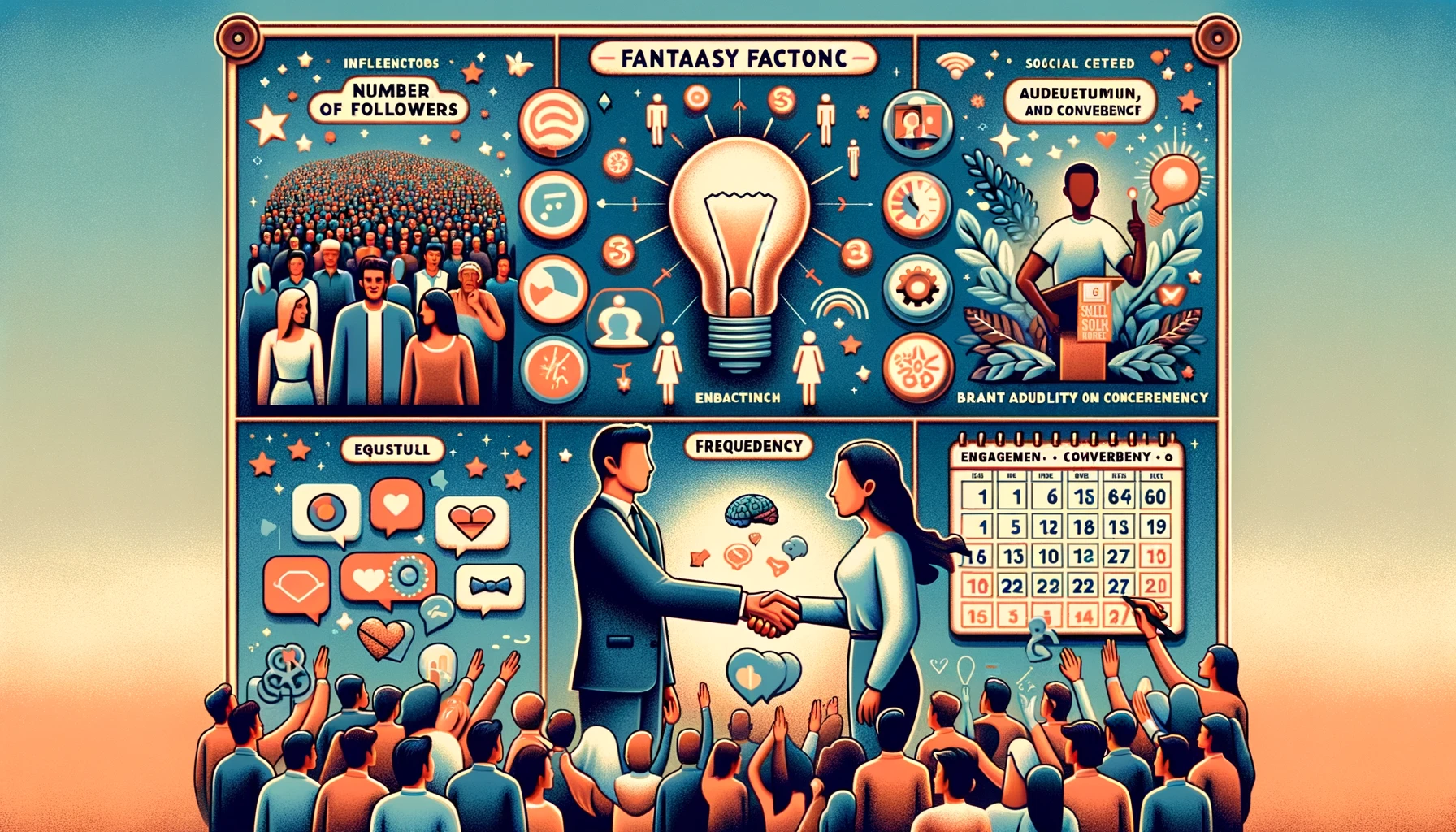Today’s influencer generation is self-directed and made possible by technology.
Consumer attention is being funneled into new(er) advertising channels.
With Americans spending over two hours on social media channels, or 12.4% of the day, it wasn’t long before this generation of entrepreneurs decided to capitalize on it. Along comes social selling.
Social selling is the intersection of social platforms such as TikTok, Facebook, and Instagram and an influencer who builds relationships with audiences. Without the other, one doesn’t have the opportunity to create the viral and pervasive effect that reaps the current reward of $700B (2023).
In this new paradigm, brands must see the customer journey differently. Ways that are often uncomfortable because they are in the passenger seat for the ride of this viral express.
Are you prepared for the viral effects on your brand?
But wait, there’s more!
Social selling is this generation’s Ronco (maker of the Veg-O-Matic) and Ron Popeil. Ron Popeil and his trademark infomercials reached millions, enticing them with the convenience of cool.
Who wouldn’t want to engage consumers with novel, relevant products that enhance their lives?
For example, Nike's use of Instagram to showcase its products through storytelling and user engagement is a prime example of brand-led social selling done right. Their posts often include customer stories, product highlights, and inspirational content, which resonate with their audience and encourage interaction and sales.
Along come third-party influencers who are self-appointed social sales organizations. They build a direct relationship with consumers using novel and relatable content. YouTuber Mr. Beast builds elaborate contraptions, engaging 231M subscribers in his channel.
Cracking the Social Code
Today’s influencer generation is self-directed and made possible by technology while capitalizing on the desires of Gen Z and Millennials to find their social voice.
What are Social Codes? - “These are drawn upon in making sense not only of the world but also of any representations of it. Much of this is tacit knowledge. Social codes include unwritten codes such as bodily codes and behavioural codes. While all semiotic codes are in a broad sense social codes (being based on social conventions), social codes can also be seen as forming a major group of codes, alongside textual codes and interpretive codes.“
“Oxford University Press. (n.d.). Social selling. In Oxford Reference. Retrieved from
https://www.oxfordreference.com/display/10.1093/oi/authority.20110803100514998”
The Six Characteristics of the Influencer Social Code Dynamic:
- Number of followers
- Audience engagement - likes, shares, and comments.
- Fantasy Factor
- Does the personal brand of an influencer or a business feel attainable or like a person’s aspiration? The more consumers answer “yes,” the higher the Fantasy Factor.
- Gretta Rose van Riel (16M) started SkinnyMe Tea at age 22 with $24 in the bank. She is every 20-something fantasy of self-made success and is solving their health concerns. Estimate net worth $5M.
- Brand attribution and Conversions – Do they work directly with the brand (this includes affiliate marketing), and does their engagement lead directly to sales?
- Engagement Frequency – Do they routinely post about a brand, or was this a one-time shoutout (the Oprah effect is a great example)?
- Trust is built on two factors:
- Character – Is the influencer personally relatable to an audience, cause-driven, and do they seem like they would or do use the product without endorsement?
- Competency – How knowledgeable are they about the product, market, and audience?
The net effect of third-party influencers in social selling is a profound connection with the brands they rep, earning everyone involved significant revenue and gravitas. And they are never a one-hit wonder.
Examples include:
- Khaby Lame (80M followers) – Hugo Boss, Dolce & Gabbana, and State Farm. Estimated net worth is north of $13M.
- Huda Kattan (51M) has her own fashion lines and works with M.A.C Cosmetics, Versace, and Sephora. Estimated net worth is north of $500M.
- Charli D’Amelio (28.4M)) Maybelline, Social Tourist (Abercrombie & Fitch), JBL, Chobani. Estimated net worth is north of $20M.
Social Selling Considerations
Social Selling is building and converting the top of the funnel through awareness and influence.
Pros:
1. Viral Reach: Social media platforms offer access to a vast audience, allowing for the message to spread via communities of interest.
2. Direct Customer Engagement: Build community and customer interaction and personalize the buying experience.
3. Cost-Effective: Often more affordable than traditional advertising methods. Particularly if you get to an influencer early in their evolution.
4. Real-Time Analytics: Provides immediate feedback and analytics on customer engagement and campaign effectiveness.
Cons:
1. Control. Brand and brand voice is being managed by someone else. In 2o17 the Fyre Festival conceived by Billy McFarland and rapper Ja Rule turned into a fiasco. The backlash on influencers Bella Hadid, Kendall Jenner, and Emily Ratajkowski was severe. McFarland served six years.
2. Time-Consuming: Requires consistent effort and content creation to maintain engagement.
3. Trust Issues: A significant portion of users are concerned about the legitimacy of companies selling on social media.
4. Privacy Concerns: Some consumers need more time to share personal information on these platforms.
5. Platform Dependence: Reliance on social media platforms means susceptibility to changes in platform policies and algorithms.
Recap
This is another part of the corporate journey that is not an if but a when. You won’t know when someone decides to engage with your brand. Have you defined a strategy?
Some highlights:
- Social selling represents a vast audience with whom you can engage directly.
- You don’t need fancy ads, videos, or expensive celebrities to make it work.
- It is work and requires a dedicated team. When positive it will spread your brand and sales to new heights.
Let’s make it a conversation:
- Is a social selling strategy in your strategic plan, and how you’ll measure success?
- Do you know which and how you will engage with today’s social influencers?
- Are you practicing social listening today?
Let’s talk.



